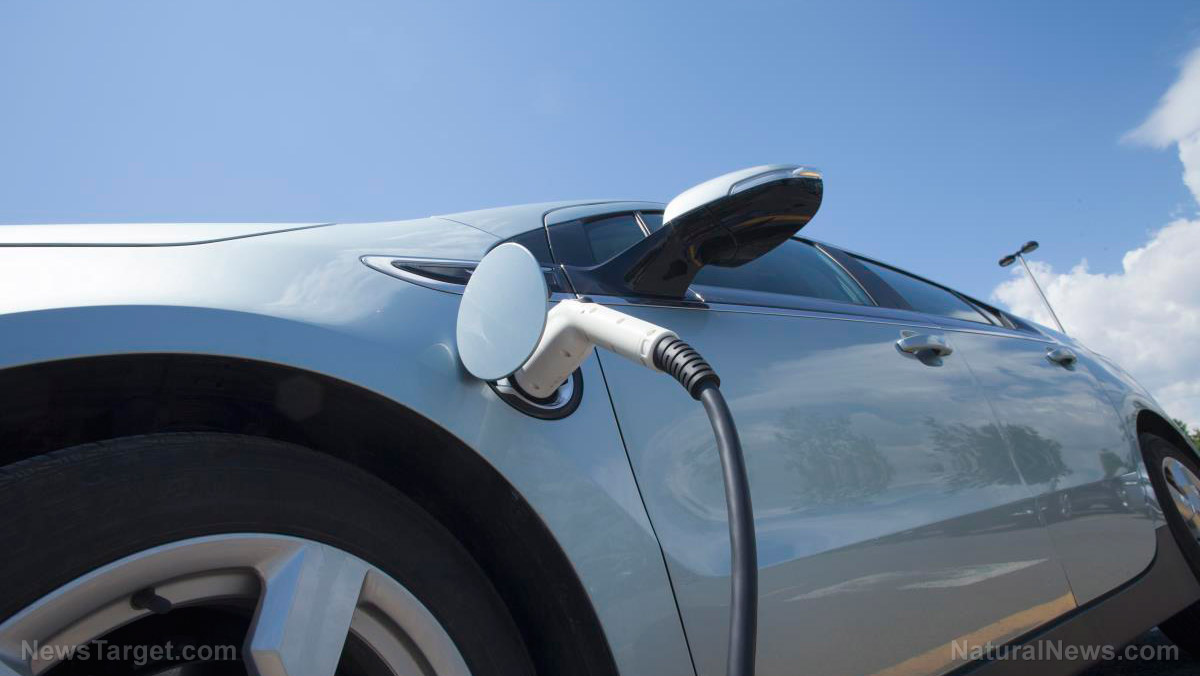The truth about “clean” electric vehicles: Here’s what tech giants like Tesla are not telling you
08/05/2020 / By Virgilio Marin

Battery-powered cars, or electric vehicles, are touted as the future of automobiles with its purportedly clean and green energy usage. The cars emerged as the conversation on carbon dioxide or CO2 emissions worldwide snowballed in recent years, and many experts are encouraging the use of renewable energy as a substitute for fossil fuel.
Indeed, several governments and international agencies are calling for efforts to reduce CO2 emissions within the next three decades, encapsulated in the mantra “net zero by 2050.” One way the market heeded the call is in creating electric vehicles or EVs, with Elon Musk at the forefront of this technology; his automotive company, Tesla, was recently declared as the world’s most valuable automotive company.
But recent findings show that EVs are not so green at all. For one, they make more CO2 emissions than the amount required to build traditional, gasoline-powered cars, not to mention manufacturing EVs involved dangerous and illegal labor practices.
More carbon emissions during manufacturing
Unlike gasoline and diesel-powered cars, EVs are said to reduce carbon emissions due to their battery-powered technologies. But this supposed advantage is blown out of proportion, according to a study published in the Journal of Industrial Ecology.
“Because production impacts are more significant for EVs than conventional vehicles, assuming a vehicle lifetime of 200,000 km exaggerates the [global warming potential] benefits of EVs,” wrote the researchers.
In fact, approximately half the lifetime carbon emissions from an EV comes from manufacturing the car, particularly mining and processing raw materials. Manufacturing a gasoline-powered car, on the other hand, accounts for 17 percent of the car’s lifetime CO2 emissions. A brand-new EV has already expended 30,000 pounds of CO2 while a similar car running on gasoline has expended 14,000 pounds.
But the CO2 emissions of EVs do not stop there. The cars have to be recharged every so often which means, depending on the power-generation fuel that is used to recharge the battery, driving an EV would require copious CO2 emissions. If the energy source comes from coal-fired power plants, a UV emits about 15 ounces of CO2 for every mile it is driven while a similar gasoline-powered car will emit only three ounces.
“If you use coal-fired power plants to produce the electricity, then all-electrics don’t even look that much better than a traditional vehicle in terms of greenhouse gases,” said Virginia McConnell, an economist at the environmental research firm Resources for the Future.
Dirty mining practices
Manufacturing UVs are also fraught with human rights violations and other destructive environmental practices.
According to a report from the United Nations, the raw materials used in electric car batteries largely come from a small number of countries with weak environmental and labor regulations. In the Democratic Republic of Congo, which supplies two-thirds of the global output of cobalt, battery production for EVs is driving a boom in artisanal or small-scale cobalt mining. These artisanal mines account for about a quarter of the country’s cobalt production, and recently they have been found to be dangerous and to exploit child labor.
In the Jiangxi rare earth mine in China, miners dig eight-foot holes and pour ammonium sulfate to dissolve the sandy clay. Then they haul out bags of muck and put them through several acid baths, before baking the remains in a kiln. What’s left are the rare minerals that are needed for EVs.
But the cause of concern is what gets left behind in the mines. The rare minerals amount to only 0.2 percent of what gets pulled out of the ground. The other 99.8 percent, which is now contaminated with toxic chemicals, is dumped back into the environment. (Related: Toxic China: Heavy metal cadmium openly dumped into rivers by mining companies.)
Furthermore, replacing the world’s gasoline and diesel-fueled cars will require ramping up mining activity and, in turn, exhaust natural resources. According to Michael Kelly, the Emeritus Prince Philip Professor of Technology at the University of Cambridge, the vast increases in the supply of raw materials such as lithium would go beyond known reserves.
Tech giants have therefore been careful in their dealings of rare minerals. Many corporations avoid direct contact with the mines and instead resort to third party companies to do the transactions for them. Earlier in 2020, for example, Tesla struck a deal with Swiss-based Glencore plc to buy up to 6,000 tons of cobalt annually from the latter’s Congolese mines.
David Abraham authored a book on the current struggle for a sustainable future amidst the rare metal age. He encouraged people to scrutinize what they invest in in order to live green.
“We can’t look at mining as an over-there thing and at Tesla as an over-here thing. They’re intricately linked.”
Sources include:
Tagged Under:




















